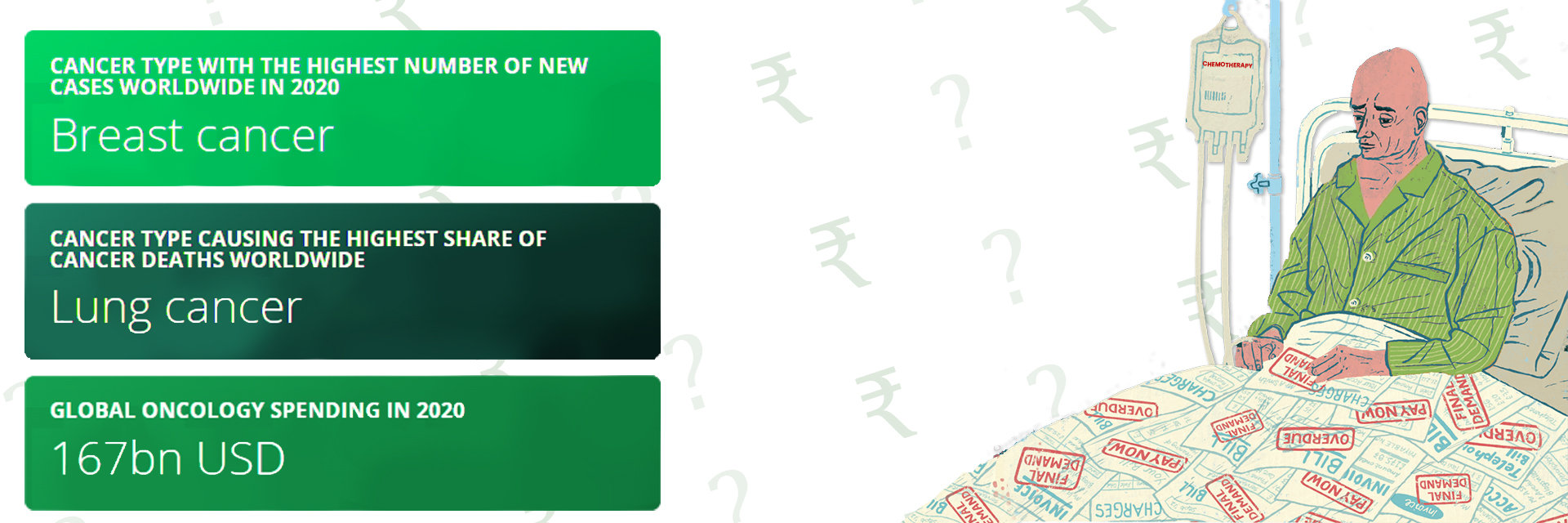Overview
Breast cancer is a major health issue for women around the world, and one of the toughest forms is triple-negative breast cancer (TNBC). TNBC is aggressive and does not respond to hormonal treatments that work for other breast cancer types. Even after a mastectomy, which is the surgical removal of the breast, there is still a risk that this cancer can come back.
Recent statistics show that in India, breast cancer is the most common cancer among women, accounting for about 27% of all cancer cases. Globally, approximately 15% of breast cancers diagnosed are triple-negative, making it a significant concern for many women facing this diagnosis.
What Is Triple-Negative Breast Cancer?
Triple-negative breast cancer is a type of breast cancer that does not have three common receptors known to fuel most breast cancers: estrogen, progesterone, and HER2. Since it doesn’t have these receptors, it doesn’t respond to hormonal therapies or HER2-targeted treatments that are effective for other breast cancers. This makes TNBC more difficult to treat and more likely to recur after treatment.
So, what factors contribute to this recurrence?
Why Does Triple-Negative Breast Cancer Come Back?
While a mastectomy removes the breast tissue, triple-negative breast cancer has a higher chance of coming back compared to other types of breast cancer. There are several reasons why TNBC can recur:
- Aggressive Nature of TNBC: Triple-negative breast cancer grows and spreads faster than other types of breast cancer. This means that even after surgery, some cancer cells might have spread to other body parts or remained undetected.
- Limited Treatment Options: Since TNBC doesn’t respond to hormone therapy or targeted HER2 therapies, treatment options are more limited, increasing the risk of recurrence.
Types of Recurrence
There are two main types of recurrence for TNBC:
- Local Recurrence: This happens when the cancer comes back in the same area where the breast was removed (the chest wall or nearby lymph nodes).
- Distant Recurrence: This occurs when the cancer spreads to other parts of the body, like the bones, lungs, liver, or brain. This is also known as metastatic cancer.
Symptoms of Triple-Negative Breast Cancer Recurrence
The symptoms of a recurrence can vary depending on where the cancer comes back. Here are some common signs to look for:
- For Local Recurrence: A new lump or swelling in the chest or underarm area, changes in the skin near the mastectomy scar, or a thickening of the tissue near the surgery site.
- For Distant Recurrence: Symptoms include unexplained weight loss, fatigue, bone pain, shortness of breath, or persistent cough.
If you experience any of these symptoms, seeing your oncologist is important.
How Is Recurrence Detected?
After a mastectomy, your doctor will monitor your health with regular follow-ups. They may use imaging tests like mammograms, ultrasounds, MRIs, or CT scans to check for signs of recurrence. Blood tests and biopsies may also be used if your doctor suspects the cancer has come back.
Treatment Options for Recurrence
If triple-negative breast cancer recurs, there are several treatment options depending on the location and severity of the recurrence.
1. Chemotherapy
Chemotherapy is often the first treatment option for TNBC recurrence, especially for distant recurrence. It helps kill cancer cells that may have spread to other parts of the body.
2. Radiation Therapy
If the recurrence is local (in the chest wall or nearby lymph nodes), radiation therapy may be used to target the remaining cancer cells in that area.
3. Immunotherapy
Immunotherapy is a newer option for treating TNBC. It works by boosting your immune system to help it fight cancer more effectively. Drugs like pembrolizumab (Keytruda) may be used in combination with chemotherapy for advanced TNBC.
4. Surgery
In some cases, surgery may be an option to remove a new tumor if the cancer has returned locally. This can be combined with other treatments like radiation or chemotherapy.
5. Clinical Trials
Since triple-negative breast cancer is difficult to treat, many patients opt to join clinical trials that test new drugs or treatment combinations. Your doctor can help you find a trial that may be a good fit for your situation.
Reducing the Risk of Recurrence
While it’s not always possible to prevent TNBC from coming back, there are steps you can take to reduce the risk:
- Follow-Up Care: Make sure to attend all follow-up appointments with your doctor, who will monitor for any signs of recurrence.
- Healthy Lifestyle: Maintaining a healthy weight, eating a balanced diet, exercising regularly, and avoiding smoking and excessive alcohol can help reduce the overall risk of cancer.
- Know the Signs: Be aware of any changes in your body and report new symptoms to your doctor as soon as possible.
If you’re concerned about breast cancer or its recurrence, don't wait, book an appointment with a specialist today for a thorough evaluation.
FAQs
1. What are the treatment options for TNBC recurrence?
Treatment options for recurrence include chemotherapy, radiation therapy, immunotherapy, and sometimes surgery. In some cases, clinical trials testing new treatments may also be available.
2. What increases the risk of TNBC recurrence after mastectomy?
TNBC is more aggressive and has limited treatment options, which increases the risk of recurrence. Other factors that can increase recurrence risk include large tumor size, lymph node involvement, and incomplete removal of cancerous cells during surgery.
3. Can triple-negative breast cancer recurrence be prevented?
While it’s not possible to completely prevent recurrence, steps like attending regular follow-up appointments, maintaining a healthy lifestyle, and monitoring for symptoms can help reduce the risk and catch recurrence early.






